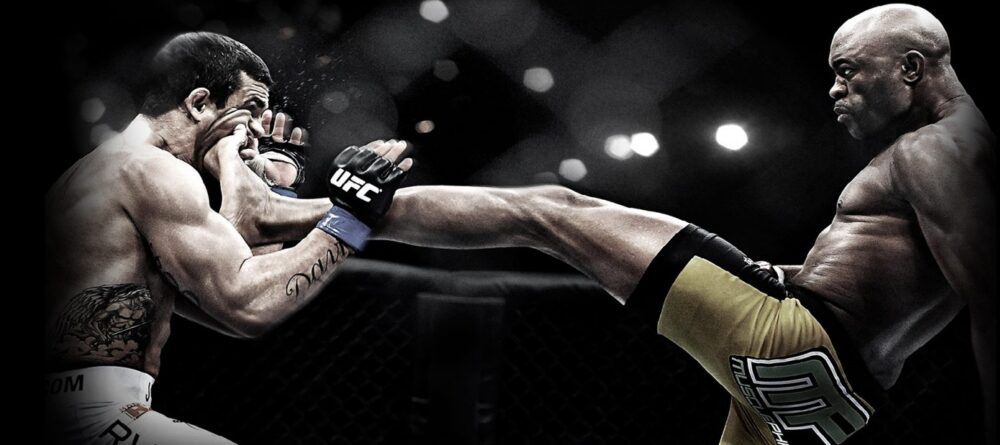Jiu Jitsu is a Japanese martial arts that dates back to the 1530s. Today it is practiced by millions of people around the world, and that’s mainly due to the popularization of it by the Brazilian fighters.
Continue readingTag Archives: brazilian jiu jitsu
What Is Gracie Jiu Jitsu?
The Gracie Family is a well-known martial arts family with roots in the Brazilian city of Belém and Paisley, Scotland.
They are renowned for developing the Brazilian Jiu-Jitsu and Gracie Jiu-Jitsu self-defense martial arts systems.
Continue readingAljamain Sterling: UFC Bantamweight Campion
If you’re a mixed martial artist, you’ve no doubt heard of Aljamain Sterling. The Jamaican native holds a black belt in Brazilian Jiu-Jitsu and has made significant strides in his striking game.
Continue readingWhy Are Mixed Martial Arts So Expensive?
Mixed martial arts is one of the most popular sports in the world. It’s no wonder – it’s a thrilling mix of physicality, strategy, and stamina. But those who want to train in MMA often ask why are mixed martial arts so expensive?
In this article, we’ll explore some of the costs associated with MMA. We’ll also discuss how to avoid these costs, and address how MMA business can go about reducing their prices and still have a thriving business.
Kickboxing Belt Grading System
MMA and it’s popularity in the world
MMA is a popular sport in the world, and for a good reason. It is a physically and mentally challenging sport that can be enjoyed by people of all ages and fitness levels.
It is also a great way to stay fit and healthy, and it offers a variety of training options that are perfect for anyone.
Mixed martial arts is popular for many reasons and has many benefits. MMA is a full-body workout – Unlike some other sports that focus on one area of the body.
Martials arts involves a whole range of movements that work all parts of the body. This makes it a great workout for everyone, no matter their fitness level or athletic ability.
Another reason why martial arts is popular is because of its versatility. You can use it to improve your strength, flexibility, balance, and cardio endurance. This makes it an ideal sport for people of all ages and fitness levels.
Are There Punches In Taekwon Do?
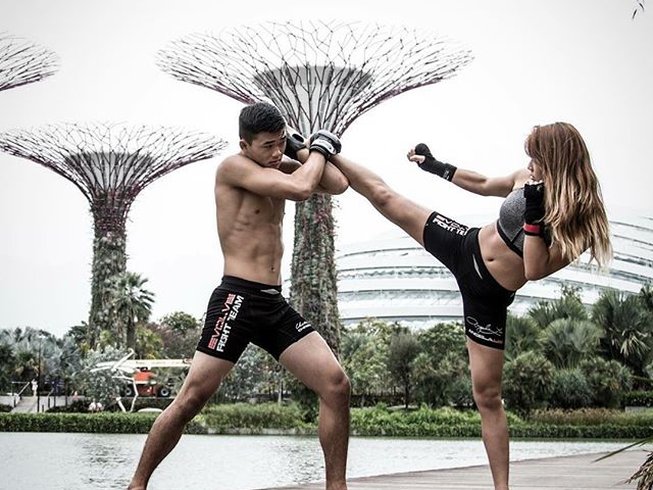
Why are mixed martial arts so expensive?
Mixed martial arts are so expensive for many reasons. The full list is below.
Gym space and MMA equipment is expensive
If you are a gym owner you have two options when it comes to your MMA facility. You can purchase the building out right, have contractors build your own gym, or you can lease a vacant spot big enough for you to add equipment into.
Either way the gym owner is going to have to spend a lot of money securing the facility, buying all the needed MMA equipment, hiring the right instructors and admin, and promoting the gym.
The majority of martial arts gym owners lease out the space they are using and their primary costs are the monthly rent and equipment. The standard cost of starting up a gym in North America is $20,000-$65,000.
Some reports online say $10,000-$50,000 but this is not the year 2000. In today’s economy things are more expensive. The monthly lease and the martial arts equipment will definitely be higher.
Quality equipment costs
When starting up an MMA gym you have to buy good quality equipment. This is for 2 reasons, the first is you want to make a good impression on your members.
If you buy any second hand equipment like punching bags, mitts, and heavy bags etc. who knows how long they will last before they tear down. That’s not a good look for you as a new gym owner.
If you’re a new gym owner you need to buy the latest equipment, and those costs are added in part to membership fees.
Equipment is not something gym owners cheap out on, because the better quality the equipment is, the more likely it is to last longer.
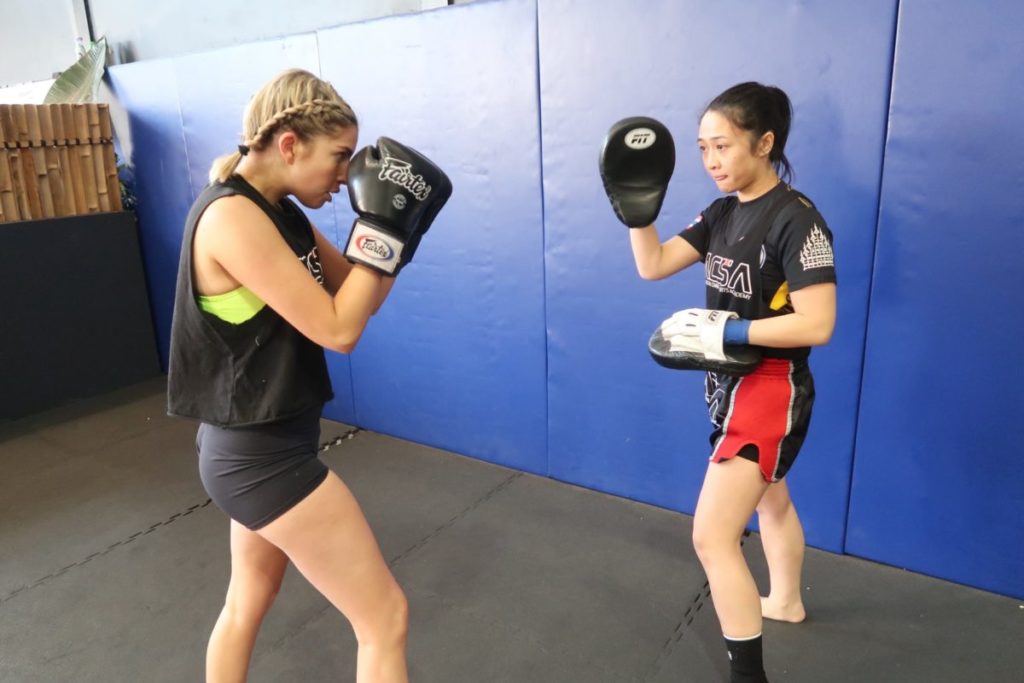
Less people register to train in MMA
Mixed martial arts has less members than traditional martial arts. The reason being is that people see traditional martial arts systems as more family friendly than MMA.
Also people are more familiar with the traditional martial arts and names such as Karate, Taekwondo, Boxing, Wrestling etc.
People stick to what they know and are familiar with and because of it MMA gyms don’t get many registrants. The lack of students force them to increase the membership to compensate for the lack of members.
It’s the same for me and my personal experience. I’ve taken Muay Thai classes in the past and I can tell you it is way more expensive than the boxing I use to take.
It’s even more costly than Shotokan karate, which I currently practice.
Must have commitment to MMA
In order to have success as an MMA fighter you have to be fully committed to it. What I mean is a lot people who take mixed martial arts do so to become a professional fighter.
Don’t get me wrong, there’s people who take MMA for fitness and to protect themselves in the streets, but I would say 1 in 4 actually want to train in order to make it into a career.
For those who want to pursue mixed martial arts as a career, it’s going to take a lot of sacrifice and long-term commitment.
This commitment is not only by the fighter, but by his coaching team. It takes money to build up a fighter and his career.
You will need the proper coaches, meal plans, atmosphere and training regiment. All of this costs a great amount of money. This is not like training in karate or taekwondo for the Olympics. This is way more intense.
Why Is MMA Not In The Olympics
Less Qualified Instructors
When it comes to teaching MMA there are less qualified instructors capable of doing so. To be a good coach at MMA or anything else for that matter, you have to spend many years developing your skills.
There are a lot of MMA gyms that I’ve visited that don’t have the adequate instructors to accommodate the amount of students enrolled.
To qualify as a mixed martial arts trainer you would need years of experience – 8-10 years would be ideal – have competed in matches (although some haven’t), and obtain certification to be an instructor.
This lets the gym owner know that you’ve put in the proper years and work to be qualified to instruct students.
Why are BJJ classes so expensive?
Brazilian Jiu Jitsu is a great self defense martial arts, and sport admired by millions of people around the world.
But many people wonder why Brazilian Jiu Jitsu so expensive? Brazilian jiu jitsu is expensive because the instructors have spent years perfecting the art and need to be compensated accordingly.
In other words, BJJ instructors are specialists that spent at minimum 10 years trying to earn their black belt. Unlike other forms of martial arts where a person can earn their black belt within four to five years.
Most of your fees go to the head coach, instructors, and maintaining the facility. Again, BJJ is expensive because the expertise of the instructors need to be compensated for the amount of years they put in to becoming proficient at BJJ.
You’re also paying to acquire skills and techniques that take time to learn. It takes longer to become proficient in BJJ than any other form of martial arts because BJJ is very technical.
If You Train Like an MMA Fighter – You Will Look Like an MMA Fighter.
Yes, this tops the list for most of us. Simply take a glance at Georges St. Pierre, Connor McGregor, or Valentina Shevchenko as the three highest profile examples. The perfect mix of lean muscle and athleticism.
In MMA this type of conditioning is close to the norm, with most amateur fighters getting in nearly as good shape. It’s the type of conditioning that turns heads when you walk by and that you can be proud of when you look at yourself in the mirror. Need to lose weight and pack on lean muscle? MMA style training has you covered

Click On The Image Above
15 Celebrities Who Train In Martial Arts
Martial arts are no joke, and these celebrities prove that every day. From actors and athletes to reality TV stars and musicians. These 15 celebrities who train in martial arts take it seriously, and use it to improve their physical and mental condition.
While some of these celebrities are more experienced than others when it comes to martial arts, all of them have successfully combined martial arts training with their other careers. Here are 15 celebrities who train in martial arts.
Here is the list of the 15 celebrities who train in martial arts
Celebrity Name: Jessica Alba
Occupation: Actor, businesswoman
Type of Martial Arts: Taekwondo and Krav Maga
Training Since: Early 2000’s
Belt Grade: Black belt
She is a successful entrepreneur and actress that is known for her well-maintained physique while being able to kick some butt.
She is a mom of two but still maintains her fitness over the years by working out and training in martial arts.
She is a blackbelt in Taekwondo and was also trained in Krav Maga which she uses in fight scenes that include weapons and hand-to-hand combat.
Jessica’s training includes a lot of striking on mitts and pads together with functional workouts for a well-rounded routine.
Standing Kimura Armlock Technique
Celebrity Name: Ed O’Neill
Occupation: Actor, comedian, football player
Type of Martial Arts: Brazilian Jiu-jitsu
Training Since: Around 22 years
Belt Grade: Black belt
A well-renowned actor and football player from the 1940s is also a martial artist who practices Brazilian Jiujitsu. He received his black belt in December 2007 and it was featured in the 2012 TV documentary “I Am Bruce Lee”.
For him, it was the greatest achievement of his life because it was an overwhelming feat of discipline that promotes his health, and physical and mental well-being even in his old age.
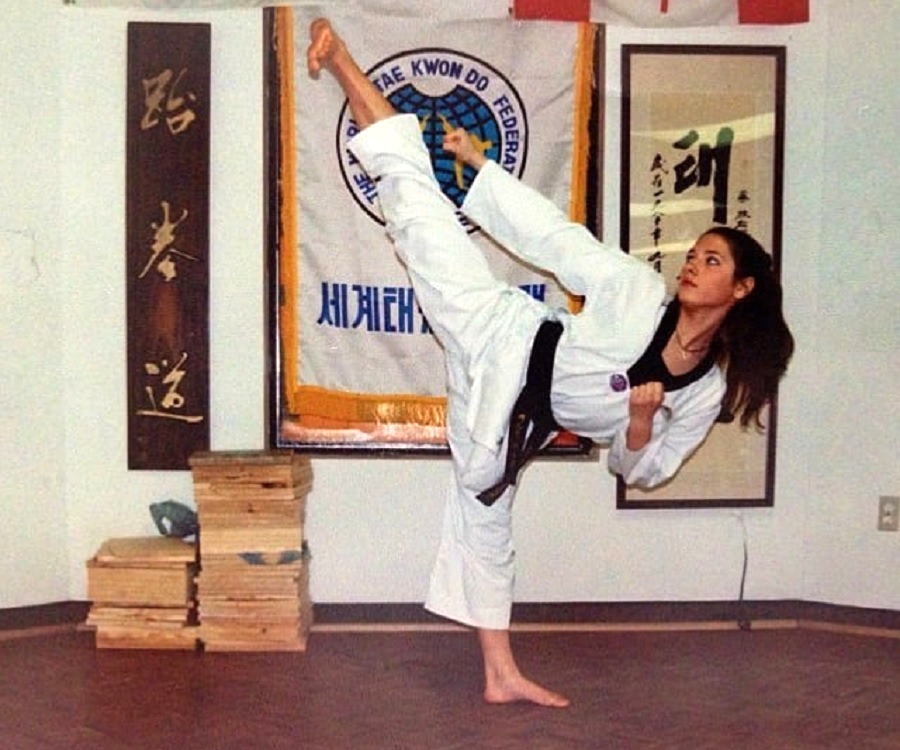
Celebrity Name: Katheryn Winnick
Occupation: Actress, stunt double
Type of Martial Arts: Taekwondo and Karate
Training Since: 7 years old
Belt Grade: Black belt
She is a Canadian actress that is known for her roles in the TV series Vikings, Wu Assassins, and Bones. She entered the movie industry by teaching martial arts to actors on the set and eventually became an actress herself.
Some of her family members are martial arts practitioners and that honed her in the sport. She started practicing at the age of 7 and became a black belt at the age of 13 and until now, she is actively practicing for her roles in the film and also to maintain her athletic physique.
Celebrity Name: Demi Lovato
Occupation: Actor, singer, songwriter
Type of Martial Arts: Brazilian Jiu-jitsu
Training Since: 2016
Belt Grade: Blue belt
Many people would be surprised that this singer, songwriter, and Grammy nominee is a martial arts practitioner! Demi has been fit all her life and while having an active music career, she chose to be fit in order to last in the industry.
She utilizes healthy living as a form of self-care and she never stops training. She earned her blue belt in Brazilian Jiujitsu in 2009 and she combines her routine with strength training and a healthy diet.
Celebrity Name: Wiz Khalifa
Occupation: Rapper, singer, and songwriter
Type of Martial Arts: Brazilian Jiu-jitsu and Muay Thai
Training Since: May 2017
Belt Grade: White belt
A well-known controversial rapper Wiz Khalifa trained in Brazilian Jiujitsu in 2017 and later trained in Muay Thai with Saenchai in a YOKKAO seminar. He improved his overall physique by combining heavy lifting and martial arts in his routine.
Martial arts kept his fluidity and while lifting weights improved his physique by adding up muscle mass and definition. All of it helped him a lot to stay in his career by staying healthy and improving his performance.
Celebrity Name: Kevin James
Occupation: Actor, comedian, and screenwriter
Type of Martial Arts: MMA and Muay Thai
Training Since: “Here Comes the Boom” in 2012
Belt Grade: N/A
Doing The Single Leg Sweep From Guard
Kevin James is a funny man who doesn’t really care about fitness, not until he was starred in the movie “Here Comes the Boom” that he realized that he really needed it all his life!
He trained for 14 months and was treated like a fighter in order to get into the physical and mental attributes of a real MMA fighter. He still trains in martial arts after doing the movie as he was an avid fan and he enjoys it.
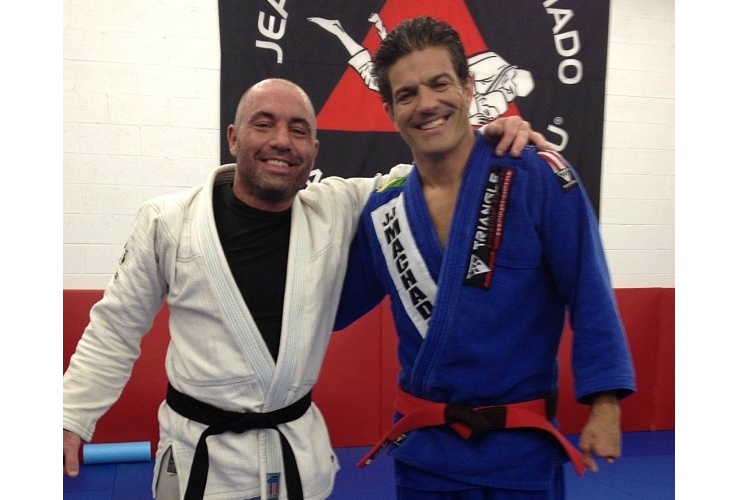
Celebrity Name: Joe Rogan
Occupation: Comedian, Actor, Television presenter, Podcaster
Type of Martial Arts: Karate, Taekwondo, Brazilian Jiu-jitsu
Training Since: 14 years old
Belt Grade: Black belt
The famous comedian and UFC color commentator is a martial artist himself! He took up Karate at 14 and taekwondo a year later. Martial arts gave him confidence and a different perspective of himself and his capabilities.
He won as a lightweight in the US Open Championship taekwondo tournament and was a full-contact state champion for four years until he became a Taekwondo instructor.
He retired from competition at age 21 but keeps his discipline until now as he is still practicing martial arts to keep his mind sharp while his body in great shape.
Celebrity Name: Henry Cavill
Occupation: Actor
Type of Martial Arts: Brazilian Jiu-jitsu
Training Since: 2018
Belt Grade: White
Henry Cavill is a fan of martial arts. He’s been doing boxing and weight training to keep him in good shape but then he added up Brazilian Jiu-jitsu to enhance his focus and to have a martial art mastery on his belt.
His training came in handy in his role in Mission: Impossible-Fallout he went toe to toe with the actor Tom Cruise.
Celebrity Name: Wesley Snipes
Occupation: Actor, producer, martial artist
Type of Martial Arts: Capoeira, Shotokan karate
Training Since: 12 years old
Belt Grade: 5th-degree black belt in Shotokan karate
Wesley Snipes was discovered by an agent while competing in martial arts and then he became famous for his role in Demolition Man, Money Train, and then later the iconic vampire superhero Blade.
His martial arts discipline helped him land his role mostly as an antagonist in films because of his menacing looks and skills that seem so hard to defeat.
His unparalleled performance as Blade made him so iconic that no one can surpass the role until now.
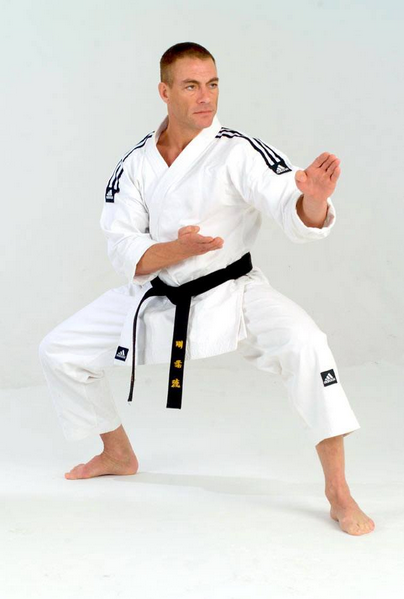
Celebrity Name: Jean-Claude Van Damme
Occupation: Actor, martial artist
Type of Martial Arts: Shotokan karate and Kickboxing
Training Since: 10 years old
Belt Grade: Black belt in various martial arts
The man of splits and high-flying kicks is what Jean-Claude Van Damme is all about. “The Muscles from Brussels” defines how martial artists should look on the screen with all those muscles showing at all angles.
He first landed the main antagonist role in No Retreat, No Surrender after being famous for his heroic roles in Universal Soldier, Bloodsport, Time Cop, and Streetfighter.
In this day and age, JCVD remains fit and flexible and he still does splits and flying kicks on the spot.
Celebrity Name: Michael Jai White
Occupation: Actor, martial artist
Type of Martial Arts: Kyokushin Karate, Taekwondo, Wushu
Training Since: 7 years old
Belt Grade: Black belt in various martial arts
Michael Jai White was the first African American who landed a major comic book superhero role known as Spawn.
He started training in martial arts at the age of seven which made him proficient in 9 different styles by practicing each style and moving on to the next.
Although his style incorporates many martial arts forms, his main focus is on Kyokushin Karate.
White is actively seen in recent martial arts movies and he continues to establish a calm but explosive personality that is hard to deal with when provoked.
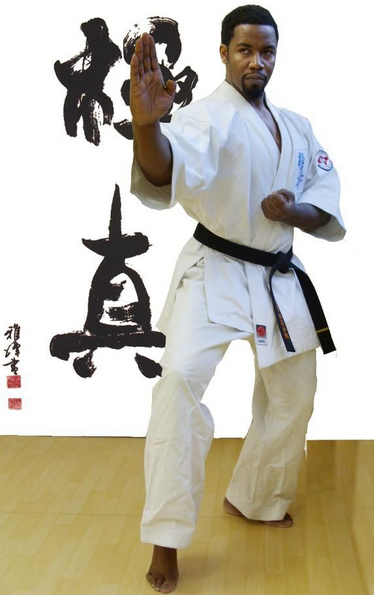
Celebrity Name: John Foo
Occupation: Actor, martial artist
Type of Martial Arts: Wushu
Training Since: 15 years old
Belt Grade: N/A
John Foo is known for his role in Tom-Yum-Goong as the wushu fighter before he landed his major role in 2009 as Jin Kazama in Tekken the movie.
He is a wushu practitioner and uses the art in a stunt role before getting into major roles in the film. John now trains with different styles of martial arts with the hopes of landing more major martial arts roles in the future.
Celebrity Name: Guy Ritchie
Occupation: Film director, producer, screenwriter, businessman
Type of Martial Arts: Judo, Shotokan Karate and Brazilian Jiu-Jitsu
Training Since: 7 years old
Belt Grade: Black belt in Judo and a brown belt in Brazilian Jiu-Jitsu
Guy Ritchie is recognized in gangster films and consistent practitioner of BJJ under Renzo Grazie. He is also proficient in Shotokan Karate as he started practicing martial arts at the age of seven.
This film director currently focuses mainly on BJJ as it benefits his age by doing more on the mats than doing striking techniques. It keeps him fit and more focused as he also actively participate in the film industry.
Celebrity Name: Keanu Reeves
Occupation: Actor
Type of Martial Arts: Brazilian Jiu-jitsu
Training Since: John Wick
Belt Grade: White
Surprisingly, Keanu Reeves claims that he had no martial arts background and his proficiency as he claims was all about movie magic.
He is a great actor who embodies any role and given a role which requires martial arts made him learn in on the set through practice.
He had learned Kung-fu movements in the movie “The Matrix” but the series of John Wick films made him study Brazilian Jiu-jitsu to formally introduce him in the art and that made him a current white belt holder, earning his way to the top.
Celebrity Name: Jason Statham
Occupation: Actor
Type of Martial Arts: Karate, Kickboxing, Wingchun and Brazilian Jiu-jitsu
Training Since: 10 years old
Belt Grade: Purple belt in Brazilian Jiu-jitsu
Jason Statham is known for his tough guy roles and surprises his enemies with his high hitting martial arts movements!
He practiced diving more than of martial arts and he was more of a hobbyist than a practitioner but that didn’t stop him from mastering his craft and landing his role as a fighter and a tough guy in martial arts film.
He didn’t devote his time in martial arts but him being an actor just like Keanu Reeves made him embody what is needed in the film and that made them train to look like they were very proficient in the arts.
If You Train Like an MMA Fighter – You Will Look Like an MMA Fighter.
Yes, this tops the list for most of us. Simply take a glance at Georges St. Pierre, Connor McGregor, or Valentina Shevchenko as the three highest profile examples. The perfect mix of lean muscle and athleticism.
In MMA this type of conditioning is close to the norm, with most amateur fighters getting in nearly as good shape. It’s the type of conditioning that turns heads when you walk by and that you can be proud of when you look at yourself in the mirror. Need to lose weight and pack on lean muscle? MMA style training has you covered!

Click On The Image Above
Top 10 Deadliest Jiu Jitsu Submissions
This Top 10 Deadliest Jiu-Jitsu Submissions list came to mind while watching some videos on Youtube of Metamoris. The now-defunct promotion company that was host to many great jiu-jitsu competitions.
It had me thinking – Jiu-jitsu is known for having a strong reputation for grappling. Some of the greatest UFC fighters have won their matches using a Jiu-Jitsu submission – so I thought I’d write about these moves.
I’ll list Jiu-jitsu submissions that are sure to leave your opponent helpless on the ground. From chokes to armlocks, these techniques will have you dominating the mats in no time.
Whether you are a beginner looking for new strategies, or a seasoned practitioner looking for new ways to tap-out your opponent, these submissions will have you covered.
Related Topics:
10) Armbar
Although an armbar is one of the first and basic submissions you learn in jiu-jitsu, it’s one of the most deadliest.
What is an armbar?
An armbar is a submission hold that is used to restrain an opponent’s arm. It is a very effective submission hold that can be used in a variety of grappling styles, including Brazilian Jiu Jitsu, judo, and wrestling.
People often ask can you break someone’s arm with an armbar? The answer is yes!
An armbar from mount position can can really cause damage to your opponent. If you apply enough pressure when straightening out the arm, locked in position, you can completely disable the arm.
It’s all about positioning and if you have the arm locked in correctly. Whether you break it or dislocate it doesn’t matter. You’re still doing vital damage to the person’s arm.
Watch any UFC match or jiu-jitsu competition, and see when a competitor is in an armbar if he doesn’t tap-out right away. They don’t want to risk their arm being dislocated.
With that being said it still does happen to some fighters. It can happen quickly. It’s all apart of fighting.
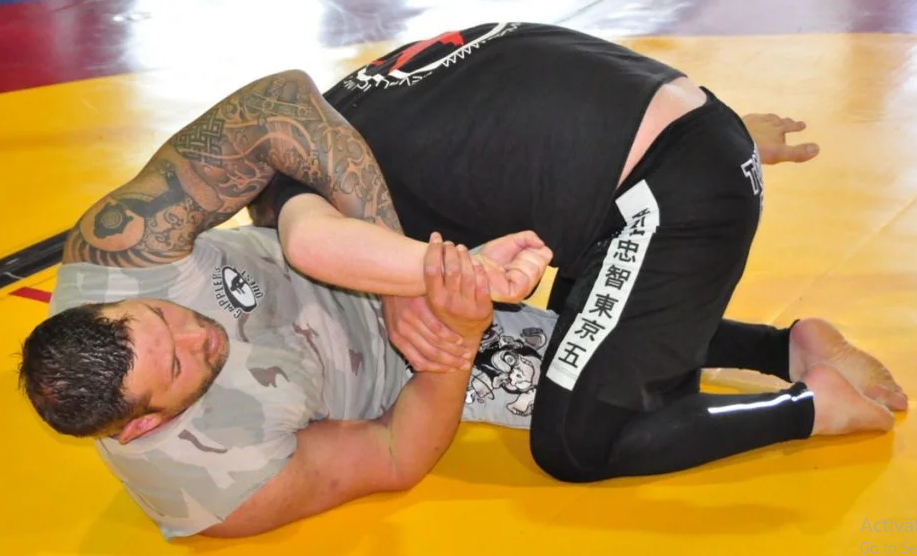
9) Hammerlock
The Hammerlock is a devastating submission that can pop your opponent’s shoulder out of place. It’s a move often seen being used by the police.
The Hammerlock can be set up from the top closed guard, pinning his arm, or from the bottom closed guard. This is what happens in sequence:
- You opponent’s arm is bent behind his back.
- Your opponent’s arm is then pushed upwards toward the neck.
- The force of the move will make him tap because the amount of pressure on his shoulder joint.
8) Kimura
The Kimura was created by Japanese Judo legend, jiu-jitsu competitor, and professional wrestler. It was introduced to the world in the infamous jiu-jitsu match between Masahiko Kimura and Helio Gracie.
Kimura managed to put Helio is the submission hold and expected him to tap-out after a few seconds, b Helio couldn’t because he was unconscious. Not knowing that Kimura continued to twist his arm even further.
This ultimately broke Helio’s arm. The pain brought him back to consciousness. Kimura was going to bend Helio’s arm even further, but Helio’s brother Carlos threw in the towel and the referee stopped the fight.
From that day forward the submission was called the Kimura to honor its founder’s name – Masahiko Kimura.
As you can tell the Kimura arm lock is a deadly submission. It can render you unconscious and even dislocate or break your arm.
7) Arm Triangle Choke
The arm triangle choke is a submission hold that is used in MMA to immobilize an opponent’s neck.
To perform the triangle choke, the fighter grasps one of their opponent’s arms with their left hand, and wraps their right arm around the opponent’s head, pulling it down towards their chest.
Once the Triangle choke is in deep it’s impossible to reverse. On average this choke takes about 8-13 seconds to put you to sleep. It’s wise for you to tap right away if placed in this choke.
If you’re the one applying this choke submission to your opponent be careful because it’s extremely dangerous.
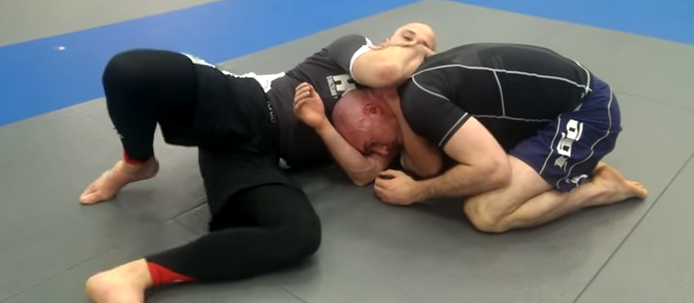
6) D’arce Choke
The D’arce choke or also knon as the no gi Brabo choke, was created by a third-degree Brazilian Jiu-Jitsu black belt named Joe D’arce.
The D’arce choke is commonly used in jiu-jitsu competitions around the world and in combat sports such as UFC and Bellator.
There are many ways to set up this submission and many ways to finish it as well. The one fighter that has used it the most in the UFC is non other than Tony Furguson.
It always use to be fun watching him set it up and finishing it beautifully.
Here are others to watch that have done the D’arce choke well in competition, and also teach it to their students.
- Jeff Glover
- Ryan Hall
- Cobrinha
- Robert Drysdale
- Edwin Najmi
- Bill Cooper
5) Ninja Choke
Not many fighters or jiu-jitsu enthusiasts know about the Ninja Choke. I often mention it to fighters and they’re always like “what’s that?”
When I’m in the gym and I mention it to students they’re as equally puzzled. They have no clue what the move is.
The Ninja Choke ws introduced to the MMA world by Shuichiro Katsumura, and it was a move that won him the Shooto featherweight crown.
The Ninja Choke is a variation of the guillotine choke and once locked in tight you will go unconscious within seconds.
This is a great submission to set up from guard and is very sneaky. Your opponent won’t know what hit him!
.
4) Peruvian Necktie
Out of all the submissions listed so far, I would have to say that the Peruvian Necktie is the hardest to set up. But once you got it, it’s all over for your opponent. Sing him a lullaby because it’s bed time.
To execute this move you will use your legs to control your opponent, and put pressure on their head while your arms are grasped around the neck.
Applying extra pressure from the legs will make it a painful hold to get stuck in. Your opponent should tap-out right away.
3) Omoplata
Omoplata is a submission hold that is used to control the opponent by immobilizing their shoulder.
It is one of the most versatile submissions in Brazilian Jiu-Jitsu, and can be used in a variety of ways to finish the fight.
This is a move also used in Judo (ashi sankaku garami) and Catch westling (coil lock).
The technique involves taking your legs and hips and using it to extend your opponent’s shoulder joint past its normal range of motion.
If done correctly and with force, you can actually dislocate someone’s shoulder out of place.
Americana Submission From Mount Position
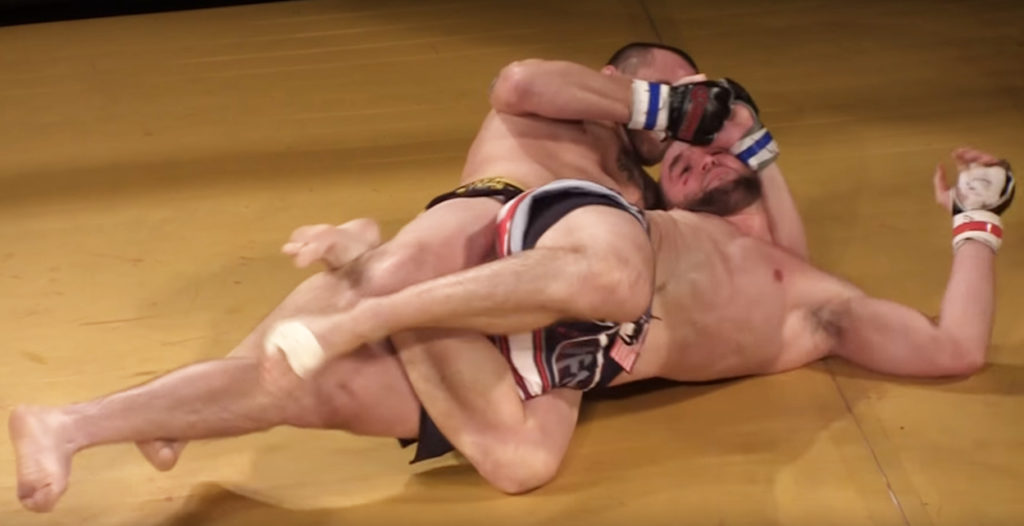
2) Twister
The Twister is a phenomenal submission that’s exciting to see a fighter execute. It’s a submission used in Brazilian Jiu-jitsu and MMA.
It was created by Eddie Bravo a BJJ legend and owner of 10th Planet Jiu-Jitsu. The Twister submission has only been used by one fighter in the UFC and that’s Jung Chan-sung aka the Korean Zombie.
This is an attack from back control – the move cranks on the neck while twisting the body in the opposite direction – quickly putting pressure on the spine.
This submission is so dangerous that it is illegal to use in the International Brazilian Jiu-Jitsu Federation.
1) Heel Hook
The number one top 10 deadliest jiu-jitsu submissions is the Heel Hook. the heel hook is one of the deadliest submission to put an opponent in.
The heel hook lets you twist on the joints in the ankle by cranking on the heel. It’s extremely painful. It has made many fighters tap-out including legendary former middleweight champion Anderson Silva.
I wrote about how to do a heel hook in on of my previous articles, and it has received much views and praise.
For many years the heel hook has been banned from jiu-jitsu competitions due to the permanent damage it can have on a fighters knee and heel.
The International Brazilian Jiu-jitsu banned it completely for many years, and in 2021 reinstated it, making it legal to do leg reaping.
Black and brown belt adults can now use reaping techniques in no-gi competition. Including the inside sankaku position.
IBJJ – New Rules Concerning Heel Hooks
The Black Belt Blueprint: An Intelligent Approach to Brazilian Jiu Jitsu
“The Black Belt Blue Print” is a must have for true students of jiu jitsu. Concise, yet comprehensive, it’s the guidebook I secretly yearned for when I began training. With wisdom and experience on every page, this book will enhance your journey in the gentle art.” Roy Dean – BJJ Black Belt

Click on image above
Written by Roger Gracie’s first black belt and founder of the Jiu Jitsu Brotherhood, Nicolas Gregoriades, this is a comprehensive guide to the sport of Brazilian Jiu Jitsu.
It features a detailed and holistic approach to the training methods, techniques and concepts which underpin the art.
How To Do A Kimura From Closed Guard
In today’s lesson I’m going to go over How To Do A Kimura From Closed Guard. This is a great offensive move to do off your back, and if you land it you’ll have your opponent tapping out in no time.
One thing to remember is that fighting off your back is a difficult thing to do, but not impossible. In fact, my advice is always try to get up off your back and stand up, than try to fight off your back.
The reason why you practice jiu jitsu is to prepare for a situation when your opponent takes you down. You don’t want to lay there and get beat up.
You want to apply techniques that will lesson the ground and pound being used against you. You also want to maneuver back up to your feet, or set up a transition into a submission move.
Once again, fighting off your back is difficult, but with practice and the right training it’s not impossible.
If you want to check out our other articles read How To Do A Standing Kimura Armlock and also be sure to check out How To Do A Kimura From Mount.
These techniques are part of our Kimura series and will get you off to a good start in knowing how to set up and apply this submission.
Kimura From Closed Guard – Jiu Jitsu
How To Do A Kimura From Closed Guard
To start this move of you of course have to be on your back, with your opponent in your guard, and your legs locked together.
This is called a closed guard because your legs are locked together with your opponent between them. We’re going to do this example with your opponents right wrist and your left arm.
From here, the first thing you want to do is get you opponent’s hand on the mat. This is called clearing the arms.
While in your guard your opponent’s hand will be on your mid section or chest trying to pin you down and control your movement, in order to transition to their next move.
What you want to do is arch your back a bit, thrusting your hip upward, and use both your hands to push away the hands of your opponent, while simultaneously pulling him closer to you with your legs.
This will automatically make your opponent place both hands on the mat in order to balance himself and pull away from you in order to gain control of the position.
* You can also read one of our most popular articles on How To Do A Kimura From Side Control. We break it down step-by-step and also include graphics and videos so you can see how it’s done.
How To Apply The Kimura Lock
Once your opponent’s hands are on the mat/ground you want to secure a hold on his wrist. You want to grab his wrist and not his forearm, because grabbing his wrist will secure your grip firmly.
Once you secure the grip on his wrist you then want to extend your arm downward toward your legs. This will lock things into place even more securely.
The reason why you don’t want to secure the wrist and leave your arm bent, is because your opponent can easily break your wrist lock by rolling his wrist towards your thumb and outward.
Your thumb is the weakest part of your hand when you have a wrist lock on someone, especially with your arm bent. Make it more challenging for your opponent to break free from your wrist lock by extending your arm.
How To Do An Armbar From Mount
After securing the wrist you want to shift to your left side. When doing this movement you want to make sure that you don’t try to sit up.
Sitting up will give your opponent leverage by using his shoulder to drive you back down, and secure a move on you.
You want to shift slightly to your left side doing a hip escape, and sit up to your elbow. Once up the next step is to create a figure four arm lock.
You do this by taking your right arm and wrapping it under your opponents arm and grabbing onto your left wrist. When initiating the figure four armlock you want to switch your left had to a thumbless grip.
The reason for this is that you’re able to lock the figure four arm lock much tighter, making it hard for your opponent to escape.
Important Advice For Fighters
- One important thing to remember is when you execute the figure four armlock you want to keep your elbows closed in. This is another way to lock your grip in tight.
After the figure four arm lock is secured you want to scoot out, turn towards your opponent with your whole body, and complete the Kimura submission. Remember to keep your elbows in tight to add more force to the submission.
How To Do A Traditional Kimura From Guard
How To Do The Arm Triangle Choke
